
CLUB WORLD CUP FINAL, JULY 13 2025
Palmer (22, 30)
João Pedro (43)
Chelsea stunned favourites Paris Saint-Germain in New Jersey to win the inaugural edition of FIFA’s revamped Club World Cup. Enzo Maresca’s Conference League holders were underdogs going into this final against Luis Enrique’s Champions League winners. However, three first-half goals against a team that had only conceded one in their previous eight games was more than enough for Chelsea to walk away with another trophy.
An impressive Cole Palmer scored twice and set up João Pedro for the third to put Chelsea in a commanding position they would not relinquish. A red card for João Neves on 85 minutes compounded a miserable game for PSG, as Chelsea lifted a trophy presented to them by US President Donald Trump.
How the managers saw it
“The idea was to go man-to-man,” said Maresca. “PSG are so good that if you give them time you are going to struggle. You have to press them very intensely. In the first 10 minutes we were able to do it. In our ideal world we have to do that for 90 minutes, but we knew because of the weather it was not possible to do it for a long time. But we tried to be very aggressive and not give them time. Then on the ball we had some very good moments, we exploited the space that we planned.”
“We are disappointed, it’s not easy, but that’s sport at the highest level,” said Luis Enrique. “Chelsea played very well and deserved to win. We accept that.”
 136232725247810201254251788710714
136232725247810201254251788710714Chelsea’s high centre-backs
Chelsea utilised a 4-4-2 when defending, but their players were often dragged into different areas when they tracked their direct opponents. Pedro Neto followed Achraf Hakimi’s forward runs and often defended as a left-back. His own counter-attacking potential was therefore limited, with Marc Cucurella then extremely narrow. When Ousmane Dembélé dropped, one of Chelsea’s centre-backs followed him into midfield, with others covering into the back line. Where possible Enzo Fernández and João Pedro narrowed as the first line, trying to limit how PSG could access their central rotations (below).
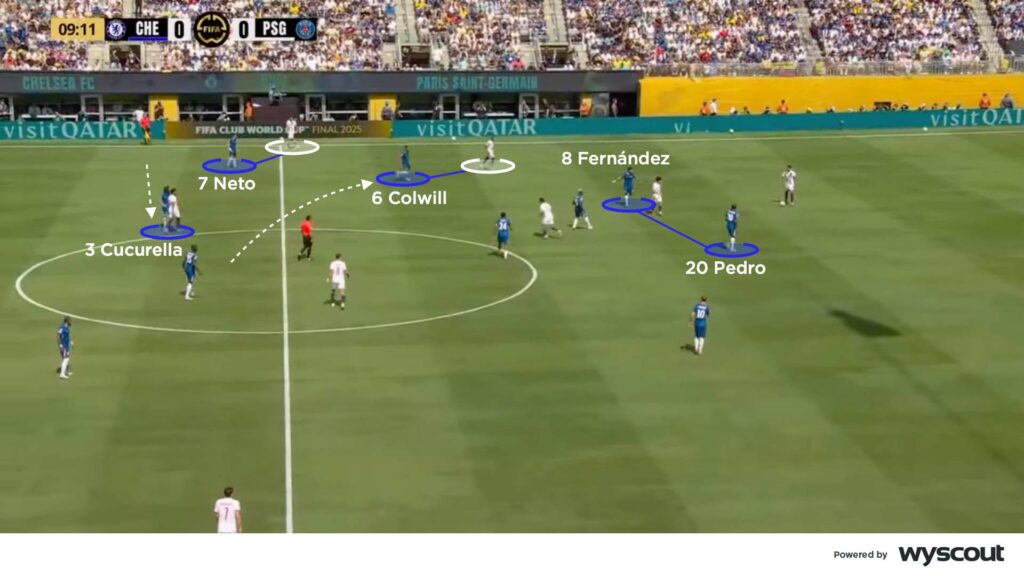
PSG rotated from their 4-3-3 starting shape in possession. Dembélé moved wide left, allowing others such as Khvicha Kvaratskhelia or Fabián Ruiz to become the centre-forward. When they pulled one of Chelsea’s centre-backs out, the French side created key moments through forward runs into this space – especially when the fluid Dembélé linked with their left inside channel (below).
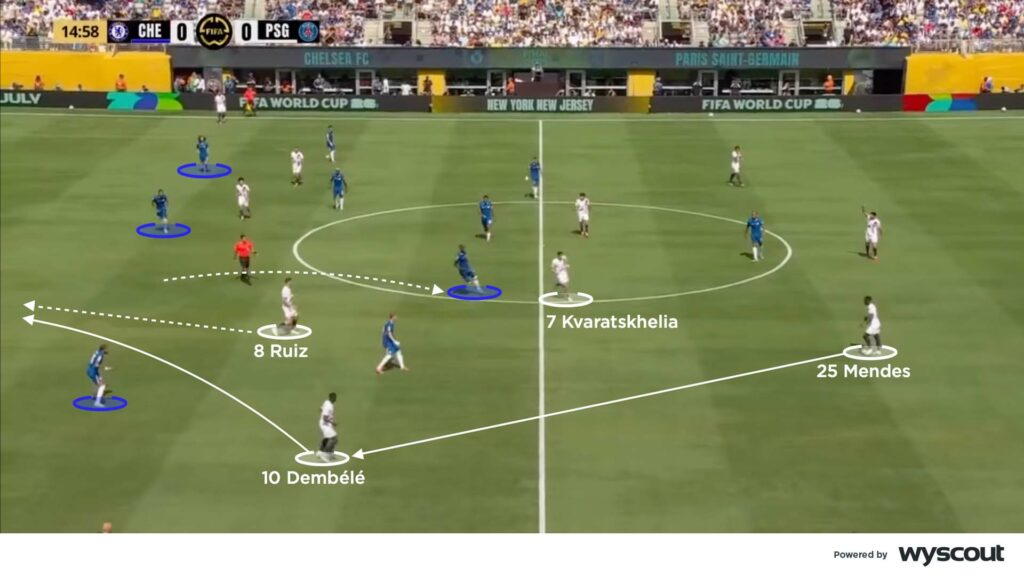
Despite this threat, it was Chelsea who scored from two counter-attacks. Maresca’s team expertly exploited PSG’s lack of defensive cover on their left side, with full-back Nuno Mendes often high up the pitch. Chelsea had continued to defend with one of their centre-backs positioned high, in support of central pressing and defending in midfield. For the second goal, advanced centre-back Levi Colwill unleashed Palmer. He calmly slotted his second, as Chelsea exploited the space on the left of PSG’s adapted back line, where Vitinha was covering (below). Malo Gusto’s forward running from deep and João Pedro bending runs to the right also caused PSG problems in this area.

As a result of Chelsea’s dangerous right-sided counters, PSG adapted their play in possession, keeping Mendes back in their build-up. This meant he couldn’t influence play in the final third as often, but strengthened PSG’s ability to defend against Chelsea’s counters. Hakimi continued to advance, though, as PSG built with a back three. Désiré Doué then moved inside to combine with those around him (below).
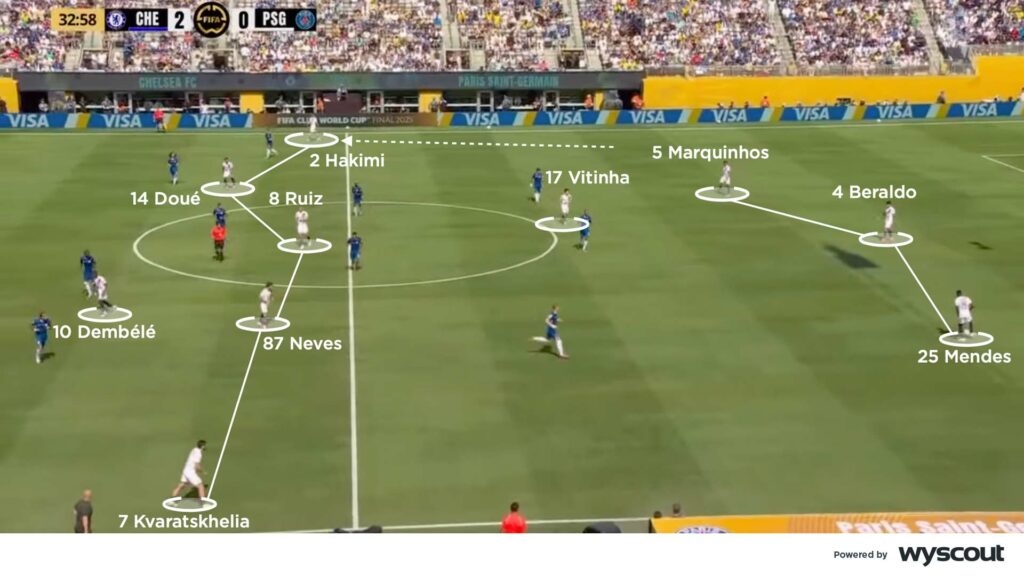
Getting five in the front line
Chelsea started the match on the front foot, pressing high and getting numbers forward early. From their initial 4-2-3-1, Gusto at right-back flew forward, moving high as early as possible. This allowed Palmer to move inside, and work around João Pedro’s varied movements as the centre-forward. Neto held the width on the left, while Fernández was very flexible with his own movements. The Argentinian worked around those nearby to help Chelsea establish a front line of five and put immediate pressure on PSG’s back line (below).
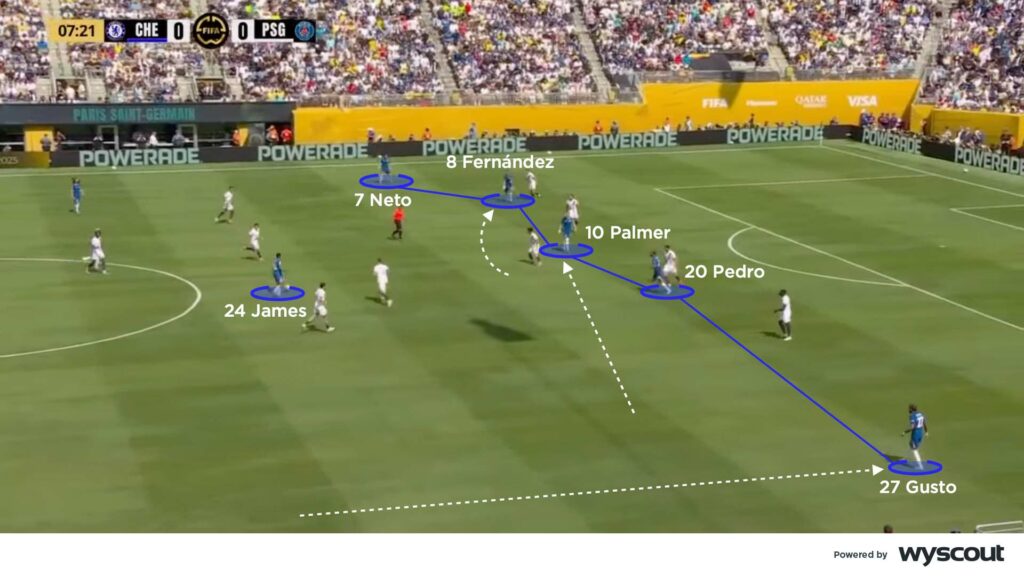
Although Chelsea’s first two goals came from counters, for their third they worked the ball around PSG’s high block. Gusto was again very high, very early. Palmer then found space inside to drive at PSG’s back line, with Chelsea quickly and efficiently getting five in their front line. Even with Mendes back in shape for PSG, Palmer managed to slide João Pedro through to lift over Gianluigi Donnarumma (below).
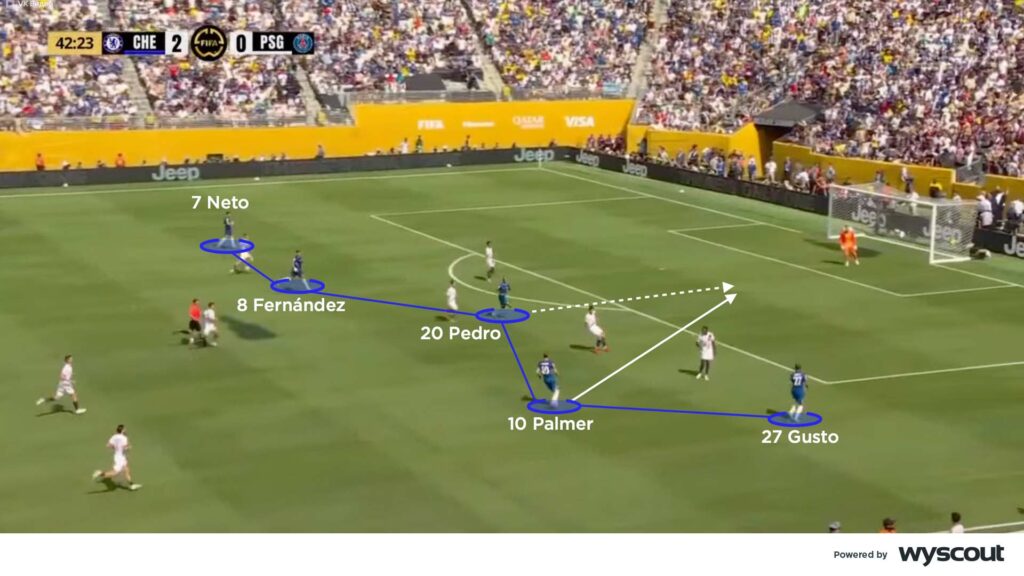
Chelsea had scored three goals from their first five attempts, with rotations and movements very similar to those that had previously brought PSG so much success this season. At 3-0 before half-time, the European champions found themselves with a mountain to climb. Some good saves from Chelsea goalkeeper Robert Sánchez ensured they didn’t even make base camp. Instead it was Chelsea who left the MetLife Stadium feeling on top of the world.
To learn more about football tactics and gain insights from coaches at the top of the game, visit CV Academy


